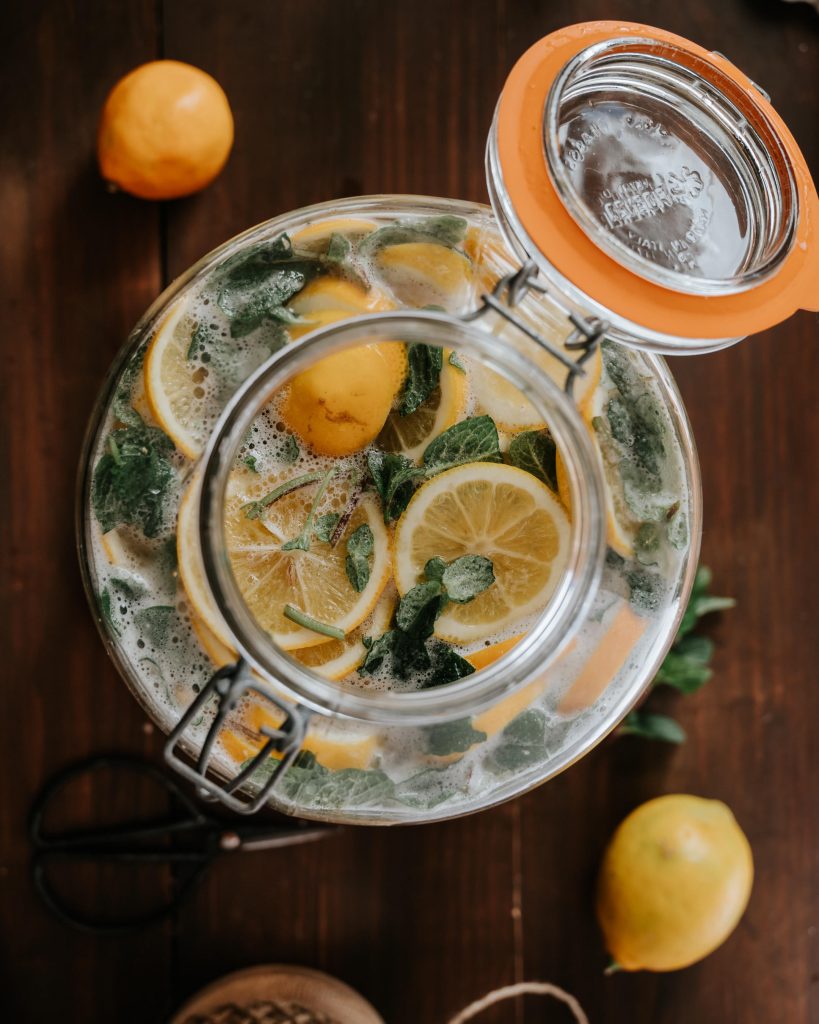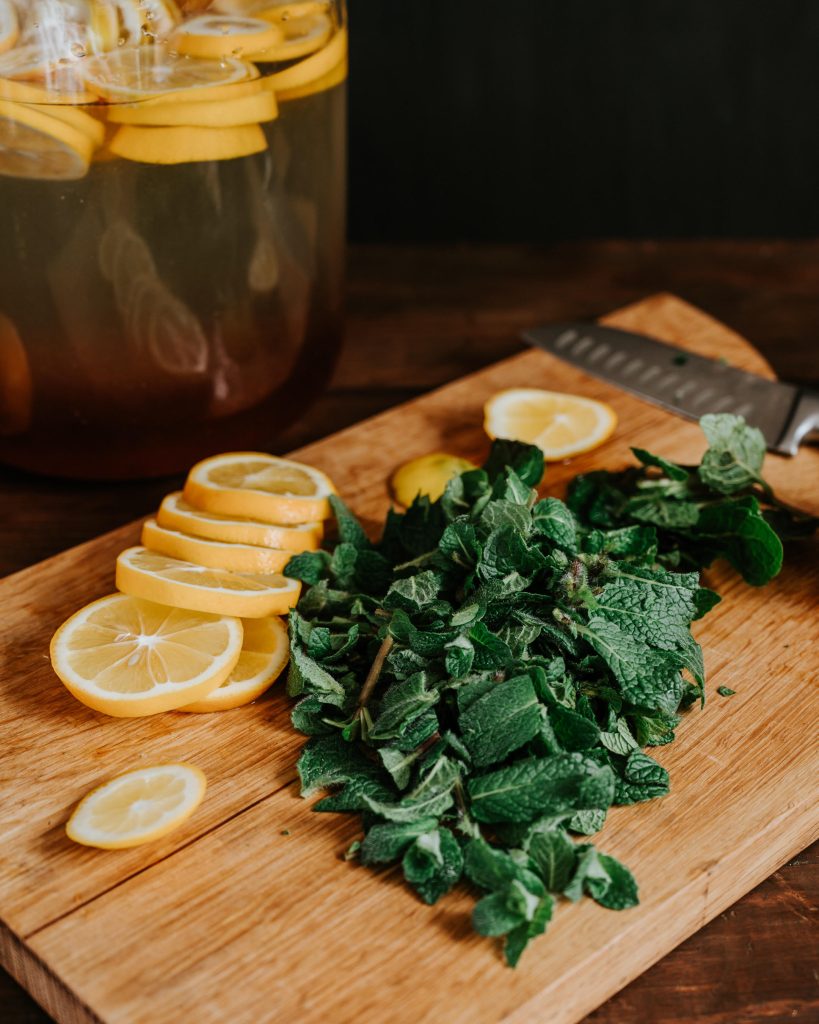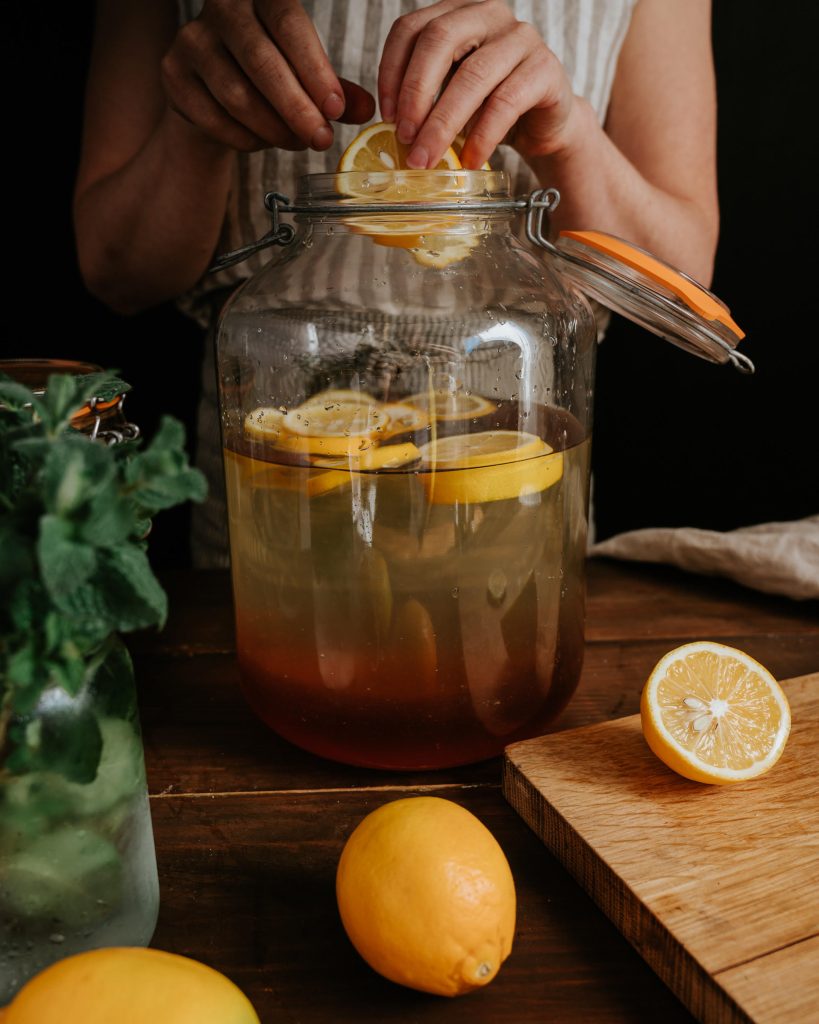This is a simple herbal mead made with foraged mint and lemons. It tastes like lemonade, only better. I use a local wildflower honey and foraged mint to make this refreshing springtime mead.

This mead is best enjoyed young for best flavor due to the mint. When I say young, that means to drink the mead after a brief fermentation period of about 2 to 3 weeks. However, if you would like to try aging the mead, feel free to experiment.
Another tip when using fresh mint is to only leave the mint infusing in the beverage for 2 to 3 days before straining. The reason for this is that mint can develop unpleasant flavors if left in too long. Ever left mint tea sitting out too long? Same idea.
What Type Of Mint Can Be Used To Make Mead?
Use any mint you can find, including foraged, homegrown, or storebought. We had over 6 varieties of wild mint alone, besides the cultivated ones from the garden.
Different mints will alter the flavor slightly. The one I used for this particular mead was a water mint that grows very early. But peppermint, spearmint, even lemon balm — these are all excellent choices.

How To Make Herbal Mead
Ingredients
1 gallon water, nonchlorinated
3 cups raw honey
3-4 lemons
2-3 large handfuls of mint
Directions
Before beginning, be sure to thoroughly clean all the equipment that will be used to make the mead. This includes the jar, funnel, spoons, knife, cutting board, and ingredients!
To clean, use plenty of hot water and soap. Another option is to sanitize the equipment with a sanitizer such as One Step or Star San Sanitizer. This is especially important if you plan to age the mead.

Mix the water and honey together in a gallon jar. Don’t fill it to the top. Leave enough space at the top to add lemon and mint.
Shake or stir until the honey is dissolved. I don’t heat the honey to avoid killing any of the beneficial bacteria and yeast in it.
This can take a bit of work to dissolve the honey, but if you use lukewarm water it goes faster. It’s also a great workout.
Slice the lemons and chop the mint and add to the jar. Stir again, using a clean spoon, to mix everything together.
Cover the jar with a tightly woven cloth and secure with a string. Place the jar in a safe space outside of direct sunlight.

Stir Frequently
One to two times a day, stir the contents for about 15 seconds. This helps to activate the wild yeast and speeds up the fermentation process. It also helps to prevent spoiling especially at the top where the ingredients are in contact with oxygen.
Depending on the temperature, after 2 to 3 days you should see signs of fermentation. This will look like bubbles when you stir the mead. This lets you know the fermentation is active, so bubbling is a good sign.
Another sign that your fermentation is active is the ingredients will float at the surface. This is due to the bubbling in the mead.
Strain Out The Herbs
It’s best to infuse the mint and lemons for just a few days then strain out. I typically leave the mint in for only 1 to 2 days before straining.
Use a clean sieve to strain out the herbs. Then, use a funnel to transfer the mead into a 1-gallon fermentation jar.
Again, remember to thoroughly clean the jar, sieve, and funnel to avoid introducing unwanted bacteria into your mead!
Ferment the mead for a period of 2 to 3 weeks to allow the flavors to develop. The length of time it takes to ferment depends on several factors.
Temperature is a big one, and the warmer it is the faster the fermentation will happen.
Wild fermentation depends on the presence of wild yeast, found in the honey and on the mint, in order for a successful fermentation to happen.
Bottle Mead and Enjoy
Once your mead is finished fermenting and you stop seeing bubbles in the airlock, it’s time to bottle it. Use glass bottles such as flip-top bottles.
The best way to bottle mead is by using an auto siphon and bottling wand. This leaves the sediment at the bottom of the gallon and results in a cleaner mead.
These are affordable and will save you time if you do a lot of home brewing.
How Long Until You Can Drink The Mead?
Wait 2 to 3 weeks before enjoying the herbal mint and lemon mead. If you can wait that long, that is. The important thing to remember is that the mead is safe to drink at any point after straining.
Waiting a few more weeks just allows more of the sugar to be consumed by the yeast, which results in a higher alcohol content. The flavors develop over time, and the end result is delicious and refreshing.
Best Honey To Make Mead
Choose a raw unfiltered honey that contains all the beneficial nutrients, bacteria, and yeast to make mead. Honey has subtle flavors from the region and flowers the bees have access to.
So, the type of honey will influence the taste of the mead. Choose a lighter honey such as wildflower honey or clover honey for mead that includes herbal ingredients.
Darker honey is great to use as well, but just expect to taste the honey in the finished mead. This can be used to your advantage to create delicious combinations, such as blackberry mead with blackberry honey.
Feel free to experiment and have fun with different honey flavors.
Does Mead Need To Be Refrigerated?
Mead does not need to be refrigerated, as long as the fermentation is completely finished before you bottle it. Once bottled, mead can typically be stored for a couple of years.
Mead is an alcoholic beverage that can be consumed chilled or at room temperature. This rule applies to mead in general but use your discretion. Mint and lemon mead tastes best chilled.
There is a benefit to chilling it — it helps to preserve the flavor and prolong the shelf life of mead.
Of course, once mead is opened, it needs to be chilled, or it will lose its flavor and spoil after about 2 weeks.
No Comments